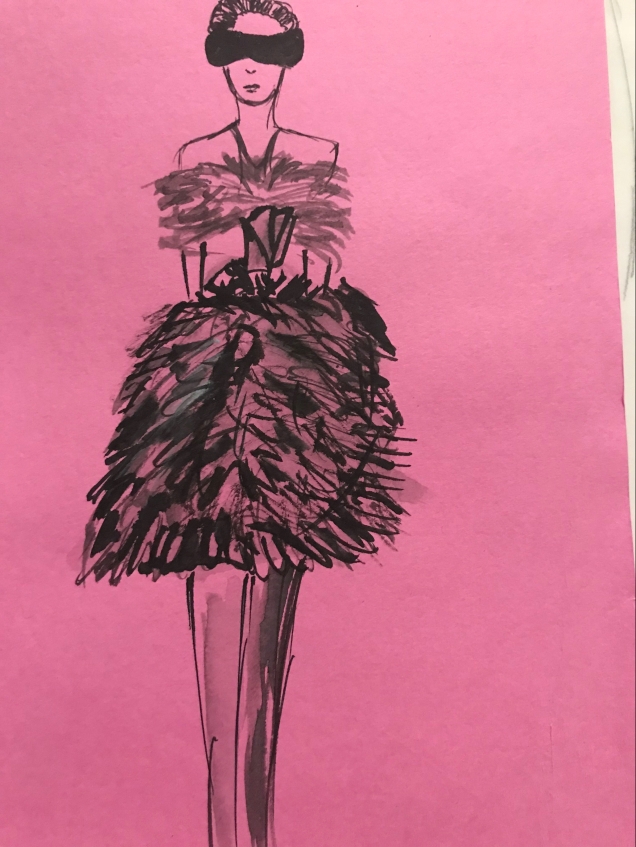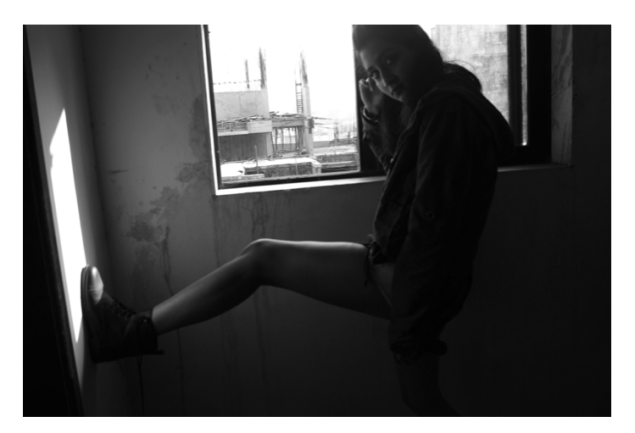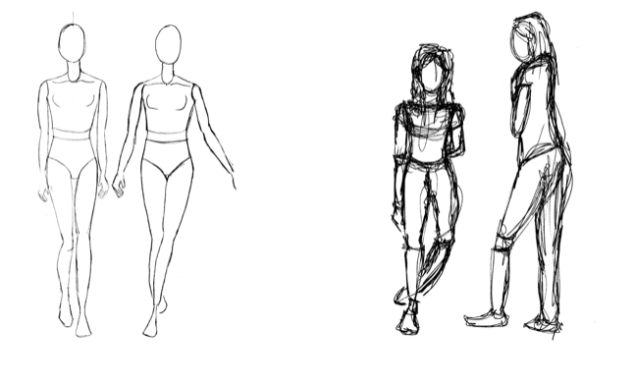Creative technical studio is making, draping, sewing and other means of garment construction in a critical and creative context.These suites of skills are presented as creative design tools to be utilised in open, iterative processes,and as means to realising and executing solutions to design problems.
We began the class with basic sewing techniques .
SHAPES
SEAMS
Side Seam 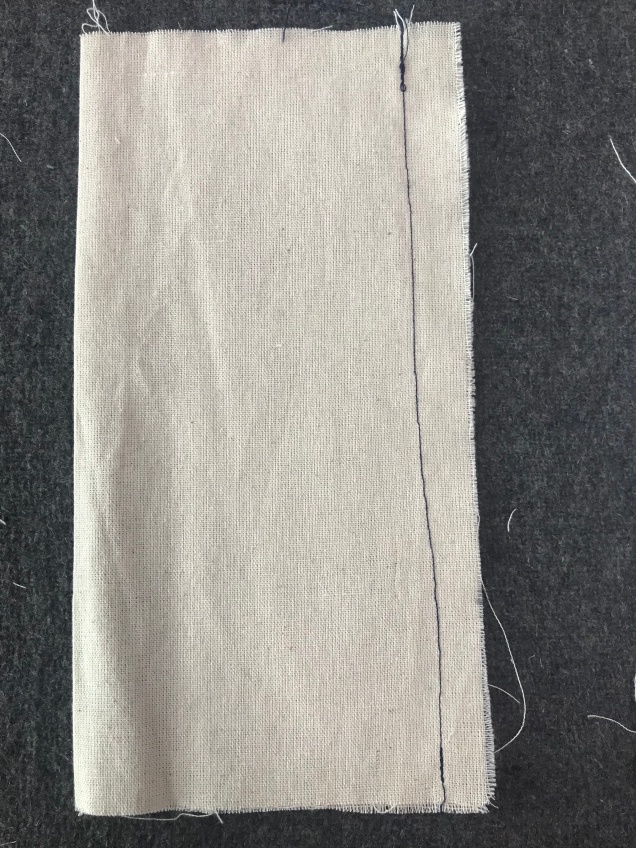
French Seam
Mock french
PLEATS
Grading

Knotching
Grading and Clipping
Clipping
SLASH AND SPREAD
Slash-spread and overlap- through the manipulating process , the pattern maker is able to see how the original working pattern change into design pattern. Pivotal transfer- in this method does not require the working be slashed in order to change its original shape into design pattern.
A dart may be transferred to any location around the patters from a designated pivotal point, without affecting the garment.We learned how to manipulate darts and how to add fullness.
Adding fullness – To increase fabric in a garment to an amount greater the that provided by the dart excess of the working pattern. The length and width within the patterns outline must be increased.
SKIRT
EVOLUTION OF SKIRTS
Humans have worn skirts since 3900 before christ . The skirt was used by women and men . The skirt has a lot of variation , For example the long which was started by wearing under the bust and later was located at the waist . The skirt after the 18 th century became much more uncomfortable. Today, a skirt’s design is all about personal style. But not long ago, long was the only way to go.For hundreds of years, a long skirt was the very definition of luxury, mainly because fabric was so expensive.Women wore long skirts for centuries, mostly as a matter of modesty and prestige .Another sign of status and beauty: the narrowness of a woman’s waist was so important that women would try to accentuate their waistlines by expanding the girth of their hips with hoops and petticoats, even a padded derriere.
we can still see this style from the 18th and 19th centuries in today’s wedding gowns
During the first world war , since all men had gone out to fight the war , women had started taking up their jobs , as they had to play the role of man as
workers in factories , their skirts took a change towards more freedom .
In the twenties , coco Chanel proposed another garment style , a skirt which was wider and shorter and would facilitate movement for women .
In the 60’s The mini skirt was created by a British designer , Mary Quaint , It was characterised by the long fabric which reached above the knee.
In 2000, he micro skirt was introduced , which was shorter .
Currently there are a variety of designs , Inspired by everything that we can see from animals , nature , places , weather to time , made from any kinds of
materials , textures patterns , lengths imaginable . At present the skirt is being used in most countries in one form or the other .
In the future skirts would have nanotechnology that will permit fabric to change colour , height , form , be adaptable to weather and much more .
The materials of the future would be inspired by ecology , nature , universe , planets and others that we can not even think about .
In conclusion ; The skirt is no longer linked to one gender , It has many transformations and meanings through history and they are here to stay for a long
long time .
SKIRT DRAPE
FRONT DRAPE
BACK DRAPE
PATTERN
After making the pattern , according to it i cut my skirt and left appropriate side seams .
I first stitched the darts and the the seam one side and attached a zipper on the other , lastly i did the waistband with the facing and hemline in the bottom .
STITCHING
BODICE
DRAPE
Front drape
BACK DRAPE
PATTERN

STITCHING
STRIPE
HISTORY OF STRIPES
Zebra, pedestrian crossing or bar code – stripes! They have been ruling the world of fashion for the latest 150 years and counting.
We do not exactly know when the first piece of striped clothing was worn but we have got loads of interesting information on stripes anyway.
Rewinding the time back to the Medieval times – it was only prisoners, clowns, prostitutes, hangmen and all the condemned that wore the striped garment as the pattern was seen as being evil. A French cobbler was sent to death only because he had been caught in striped clothes!
Lets fast forward to more friendly times for stripes though. In the end of 18th century stripes have finally become chic. All thanks to well know at these times people.
In 1846 Queen Victoria dressed her four-year-old son, Albert Edward in a sailor suit to board the Royal Yacht. Ever since then the public became entranced and adored any kid wearing stripes.
The whimsical look was also popularized by Franz Xaver Winterhalteanr’s painting in 1847 showing a boy wearing striped marine jacket. These days no one knew that the sea-to-land look would be the basisand a mainstream trend that would span more than 150 years.
Eventually swimmers also adopted the style, wearing smart, navy blue and white striped bathing suits, in the standard these days neck-to-knee fashion
The striped shirt has been a beloved institution in fashion since mid 19th century. A navy blue and white shirt with 21 striped symbolizing each of Napoleon’s victories became the uniform for all French navy men. The Breton shirt – named after the Breton workers who increased its popularity throughout the later half of the nineteenth century.
STRIPE MOODBOARD

STRIPE SKIRT
DRAPE
PHOTOSHOOT
BODICE DRAPE
PHOTOSHOOT
VOGUE PROJECT
For the vogue runway, we were asked to check spring summer 2018 collection and select one bodice pattern and one skirt pattern which we wanted to stitch. After going through quite a lot of designs, I came down to the following designs below. To proceed with the final design, we searched and collected fabric swatches for the following skirts below.
REFRENCE
SKIRT
I chose to do a gathered panel skirt , so to make the pattern , i had to fist make a skirt block and then cut it into the panels . I traced the same panels on a another gateway sheet and took 4 inches of extra on my pattern using the method to adding fullness . 
PATTERN
Stitching
VOGUE BODICE
 PATTERN
PATTERN
STITCH
FINAL PHOTOSHOOT

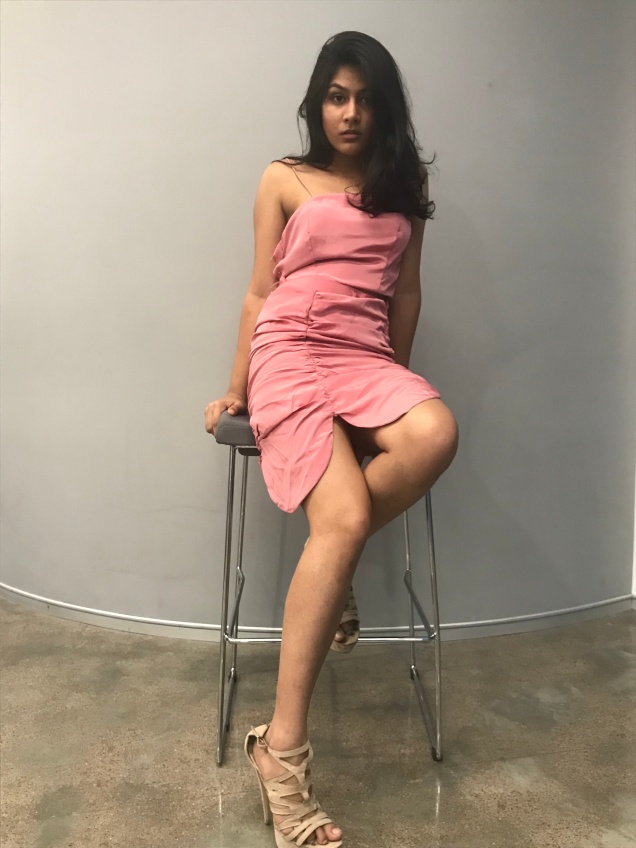



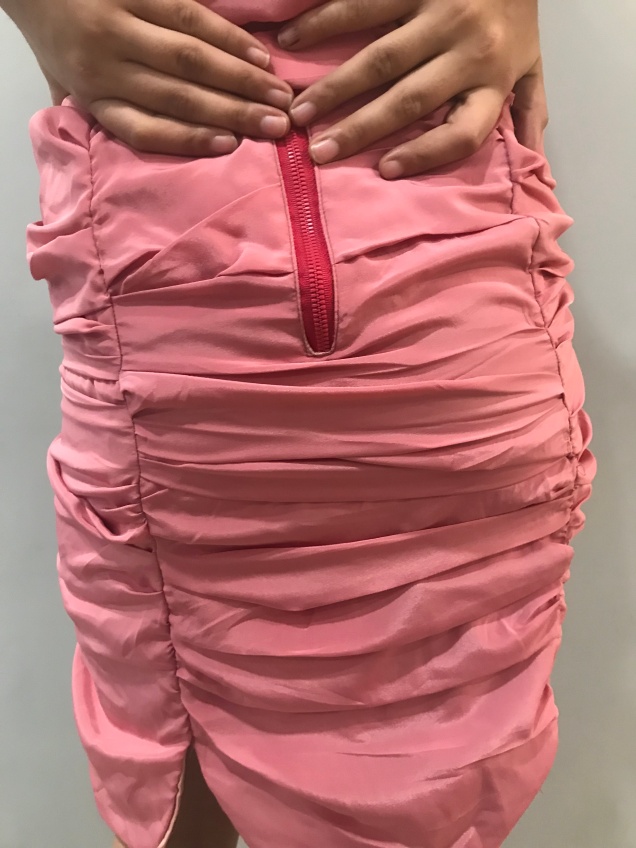

PROJECT 2
PROJECT BRIEF
This project’s goal was to make us analyse the purpose of a single garment component. We had to first study the history of the garment in order to understand the context in which it came into existence. Find the purpose of that garment component in today’s time . We had to define its purpose .
Using our research we had to come up with design developments as to how we would change the garment component in todays time .
when we got the project brief , I researched of quite a few tribes and countries like the Herero women tribe from Namibia , The balinese traditional dress and the kimono . After researching on all of the former mentioned , i decided to take japan as I have always been fascinated with the north eastern countries and as japan had a lot of history . During the research i found about the . It was the earliest trace and form of a kimono , which was a kosode and decided to take that as my garment component .

Research
HISTORY
The kosode (KOH-so-da) is a basic item of Japanese dress for both men and women. It was once worn as an undergarment, and is what most people imagine when using the much broader term kimono. The literal meaning of the term kosode is “Small sleeve” which refers to the sleeve opening.
They were worn during the Japanese edo period ( 1600-1868)
The kosode takes its name from the adjective ko, meaning “small,” and sode, for “sleeve.” In that a kosode/kimono sleeve has the appearance of a large pouch, it is difficult to consider the kosode sleeve as being small. In fact, what is small relative to the overall sleeve size is the opening through which the hand passes. The kosode sleeve opening is so-named in contrast to the ōsode sleeve, which is entirely open and unsewn.
The kosode took precedence over the ōsode as the was relegated to conservative milieux such as court rites, religious rituals, and
the kosode took precedence over the ōsode as the was relegated to conservative milieux such as court rites, religious rituals, and the no theatre. Other variations in construction include the absence or presence of a lining, wide lapels that overlap or narrow ones that abut, a flat collar, and the occasional use of padding. When the front panels of the robe are wide enough to overlap, the left front panel is always closed over the right side. The obi is a sash used to secure the robe around the body
Distinctions existed among kosode of the past, some of which are still current in kimonos. One type of kosode, the furisode (literally, “swinging sleeves”) has sleeves especially long in their vertical dimension. The furisode is reserved for unmarried girls. The katabira, for which the nearest modern descendant is the yukata, was unlined and not made of silk, but rather of a bast fibre (usually hemp or ramie). Two other types of kosode, called koshimaki and uchikake, were worn as outer robes on top of another kosode. The koshimaki was densely embroidered with small auspicious motifs and draped around the hips while held in place by an obi. It became obsolete; however, the uchikake, worn like a cape and not fastened at the waist, had a thickly padded hem and was still being worn at marriage ceremonies in the early 2000s.
After the kosode ceased to be the plain, un patterned silk garment worn next to the skin under layers of voluminous robes, as in the Heian Period (794–1185), it served as outerwear, initially for the lower classes and eventually for the samurai class and the aristocracy.
One of the first discernible styles in kosode, nuihaku, featured decoration in embroidery (nui) and metallic foil (haku). In some examples, the robe’s markedly contrasting sections differ in both motifs and colour schemes. Another early style, known by the poetic name tsujigahana (literally “flowers at the crossroads”), was technically exacting, involving careful tie-dyeing, delicate ink painting, and, occasionally, embroidery and applied metallic foil. Some kosode patterned in this fashion were only decorated at the shoulders and hem, with the midsection left empty. primary vehicle for fashion,
FABRIC
Cotton was a luxury fabric in period. Hence, even in plain coloured cotton you will be very spiffy, from a period perspective.
Kijōka-bashōfu (喜如嘉の芭蕉布) is the Japanese craft of making cloth from the bashō or Japanese fibre banana as practiced in Kijōka in Ogimi, Okinawa. Like linen, hemp, ramie and other long vegetable fibres it does not stick to the skin in hot weather; as such it is suitable for the climate of Okinawa.[1] Kijōka-bashōfu is recognised as one of the Important Intangible Cultural Properties of Japan
The Japanese loom of the time was 14” wide; hence all the garb is sewn in that or multiples of that width.
CONSTRUCTION
Japanese garments are constructed based on the width of the fabric, or divisions
When you consider that each sleeve and body panel of a kosode or kimono uses one full width of fabric, plus the half-width overlap panels in the front, you’ve just increased the size of the robe by a factor of five.
the sleeve panels were often much narrower in proportion to the body of the garment. If you have a small build, you can cut your sleeves more narrowly and imitate the correct period cut. Being broad shouldered and long armed, I used the full width of 16″ in constructing my kosode sleeves so that the overall silhouette hung correctly and the sleeves were long enough. The strip of fabric that forms the collar is also fairly wide, compared with those on modern kimono. Construction is symmetrical .
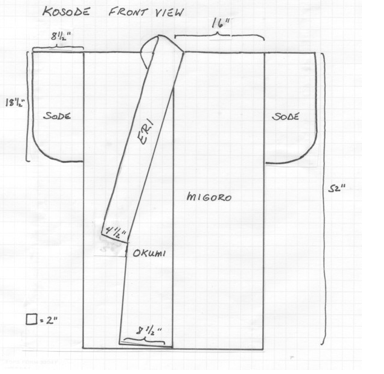
PRINT
Rice was the primary standard of wealth in the
edo society was rich in religious , political
overtones that made it a popular motif in all
medias .
Illustrations were used as prints , depicting the daily
life in the 19 Th. century . One such example is this
kosode with rice cultivation illustration . 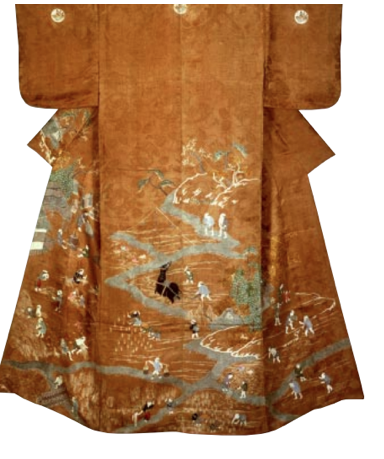
BIBLIOGRAPHY
Wodefordhall.com. (2017). The Kosode. [online] Available at: http://www.wodefordhall.com/kosode.htm
Fashionencyclopedia.com. (2017). Kosode – Fashion, Costume, and Culture: Clothing, Headwear, Body Decorations, and Footwear through the Ages. [online] Available at: http://www.fashionencyclopedia.com/fashion_costume_culture/Early-Cultures-Asia/Kosode.html
Raito.com. (2017). Japanese Garb. [online] Available at: http://www.raito.com/clothing.htm
Wodefordhall.com. (2017). Samurai Eye For The SCA Guy A Gallery of Your Photos. [online] Available at: http://www.wodefordhall.com/samurai.htm [Accessed 7 Nov. 2017].
En.wikipedia.org. (2017). Kosode. [online] Available at: https://en.wikipedia.org/wiki/Kosode
En.wikipedia.org. (2017). Edo period. [online] Available at: https://en.wikipedia.org/wiki/Edo_period#In_popular_culture
Encyclopedia.com. (2017). Clothing of Early Asian Cultures – Dictionary definition of Clothing of Early Asian Cultures | Encyclopedia.com: FREE online dictionary. [online] Available at: http://www.encyclopedia.com/fashion/encyclopedias-almanacs-transcripts-and-maps/clothing-early-asian-cultures
Vam.ac.uk. (2017). A History of the Kimono – Victoria and Albert Museum. [online] Available at: http://www.vam.ac.uk/content/articles/h/a-history-of-the-kimono/
Art, A. (2017). Art of the Edo Period (1615–1868) | Essay | Heilbrunn Timeline of Art History | The Metropolitan Museum of Art. [online] The Met’s Heilbrunn Timeline of Art History. Available at: https://www.metmuseum.org/toah/hd/edop/hd_edop.htm
MOOD BOARD

GARMENT DESCRIPTION
I started with making the basic pattern of a kosode which had huge rectangular panels as its pattern . I then cut it on to the fabric and started draping my fabric . After draping i realised that i was fascinated with how the garment worked with the width of the fabric, and wanted to keep that component in my design , so I chose to keep most of the drape the same to the original kosode , During my research , i found that the prints they used to use in the edo period , during the 19 century , were illustrations depicting their daily lives ,I found it as an interesting concept and decided to make a print of my own for the garment . The idea of illustrating their daily life fascinated me enough to create my own print depicting my modern daily life . I took my city and one strong factor about me as the key components of the print . I took up the Mumbai skyline , as it is the current city i am living in as well as well as depicts our modern life well . The second element i took for my print were dancing figures , as its strongly showcases who i am , and talks about my daily life ,and who i am , just like the rice cultivators . The prints were all in dull colours , so i decided to change that into brighter tones . I wanted to keep it simple so i chose primary colours and then mixed and matched the tones and shades to choose what made my design look aesthetically pleasing as well .
When deciding on what fabrics to choose , my first option was cotton , just like how they used in the original kosode , but to get the ideal fall and flounce to the drape , i decided to go for medium weight rayon .
TECHNICAL SKETCH

PATTERN

DESIGN DEVELOPMENTS FOR PRINT
FINAL PRINT

CUTTERS MUST
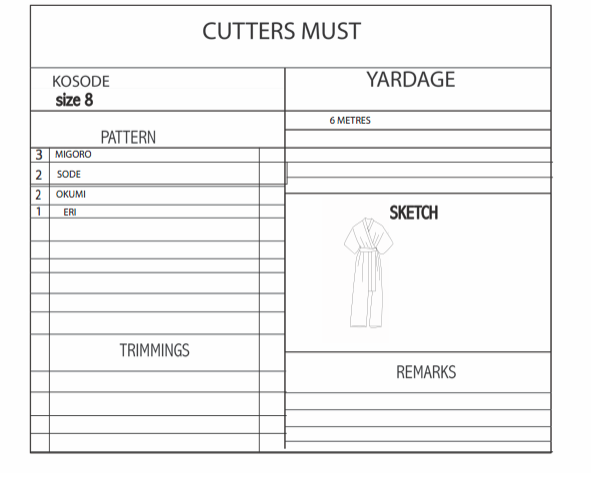
TOILE
PROCESS
PHOTOSHOOT REFERENCE
For my Photoshoot , I decided to style my garment as an outer wear , the exact opposite of what the original function of the kosode was . To give it a modern look , I thought about wearing it with a solid colour slip dress so it wouldn’t shift the focus from my garment . I wanted to still keep the essence of nature in my photoshoot and the location to have an antique look which would still go well with my garment .
I chose both , a little provocative poses and conservative poses to give it a mix of what the original garment was that i took inspiration from and what i interpreted to in my design .

PHOTOSHOOT


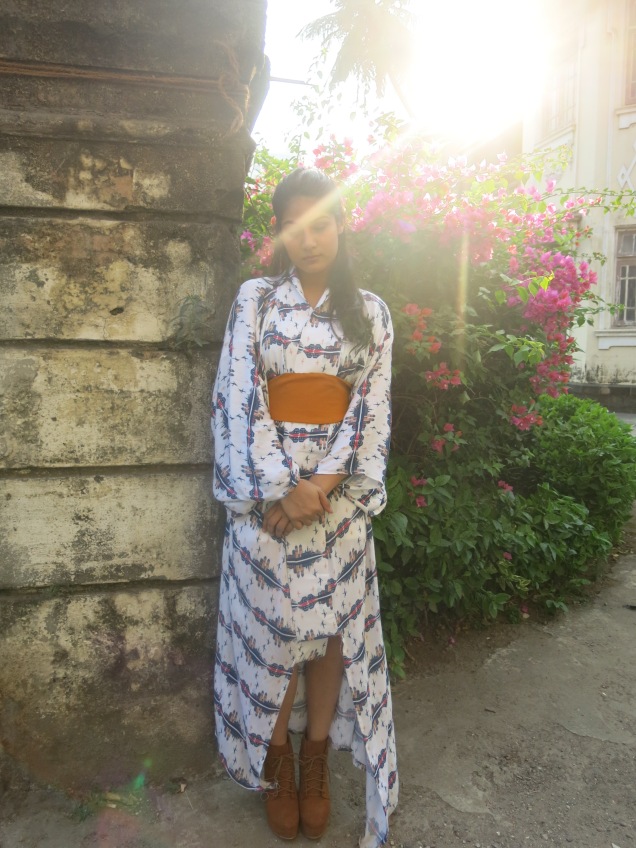
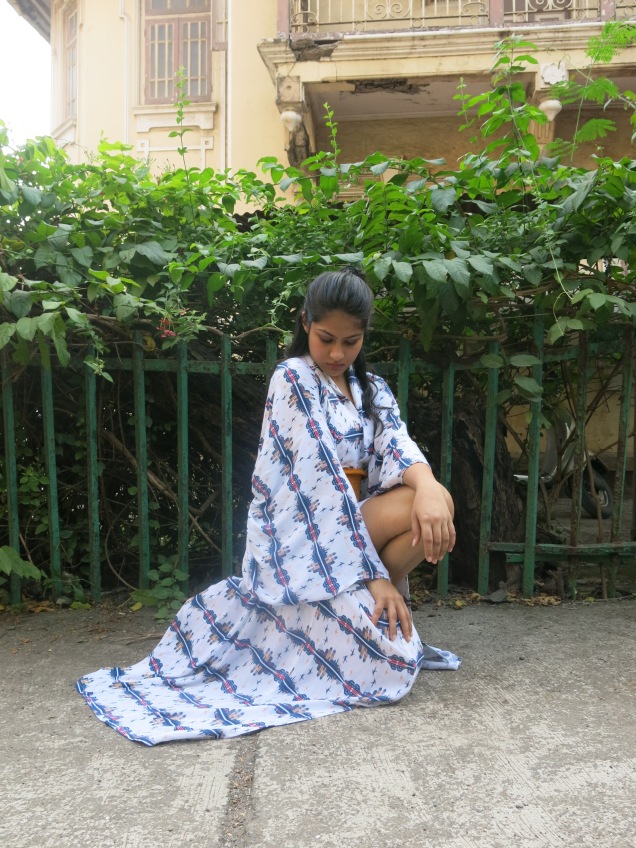


REFLECTIONS
- I learnt the basics of sewing
- I learnt to understand the complexity or ease of stitching different fabrics .
- I learnt to use different finishing techniques.
- I learnt how to hand tack .
- I learnt how to convert a drape to pattern .
- I learnt how to convert a pattern into a garment .
- I learnt the basics of sewing a simple garment .
- I learnt about different type of musings and finishings .
- I learnt to take proper measurement to stitch a garment .
- Through this stripe project , i learnt about straight grain and cross grain of fabrics .
- I learned to understand how drapes fall with different fabric .
- I learnt about the history and importance of stripes in fashion .
- I learnt how to convert a garment into a pattern .
- i learnt how to understand different patterns
- i learnt how to convert a pattern into a garment .
- i learnt how to stitch lining and piping in a garment . i learnt the difference of stitching different types of fabrics .
I learnt the basics of sewing and the sewing machine.I learnt to understand the complexity or ease of stitching different fabrics .I learnt to use different finishing techniques like different types of seams .
I learnt how to hand tack ..I learnt how to convert a drape to pattern . I learnt how to convert a pattern into a garment . I learnt the basics of sewing a simple garment . I learnt about different type of musings and finishings . I learnt to take proper measurement to stitch a garment . I learnt to convert a 2d pattern into a 3d garment .
Through this stripe project , i learnt about straight grain and cross grain of fabrics . I learned to understand how drapes fall with different fabric . I learnt about the history and importance of stripes in fashion .
I learnt how to convert a garment into a pattern . I learnt how to understand different patterns I learnt how to convert a pattern into a garment . I learnt how to stitch lining and piping in a garment . I learnt the difference of stitching different types of fabrics . This project helped me understand how to I could make a garment replicating from the runway .figuring out the pattern and details on my way to the final garment .
The second project gave me an opportunity to use my learnings from other courses and incorporate them into this one . For this project I decided to make a digital print getting inspired by the illustrations done in the olden time . This gave me an opportunity to experiment with digital print . It also helped to realise and understand how to cut and stitch fabric with horizontal print printed on it .
Through the research done for this project , I got to know and understand the history and background of certain garment components and how over time they developed into what they are today . This learning gave me a better understanding which helped me develop my design better .
through project 2 in the course i was able to contextualise and comprehend personal design methods by documenting the use of primary research and exploratory 3D processes.
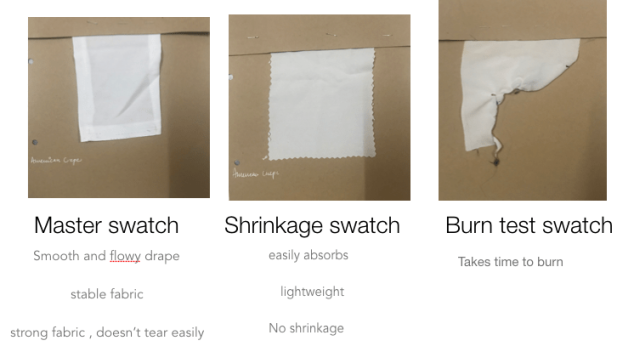
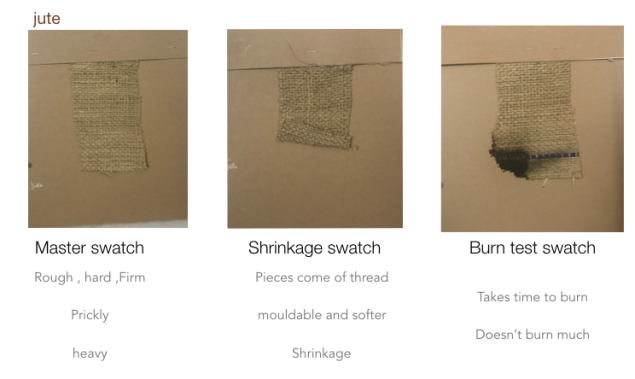











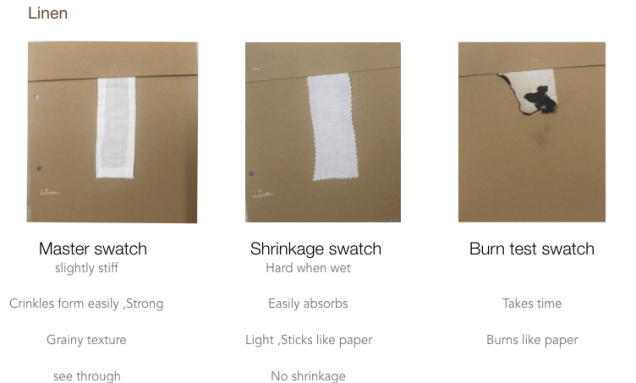






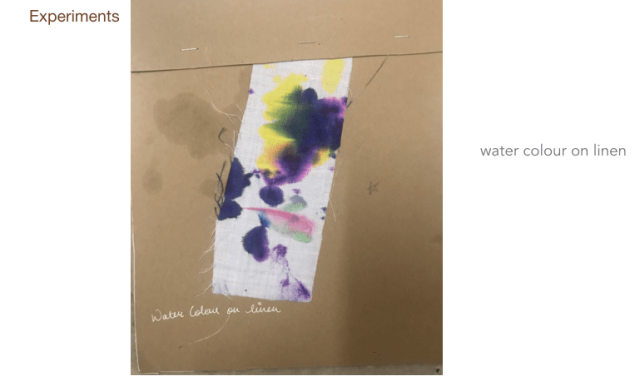






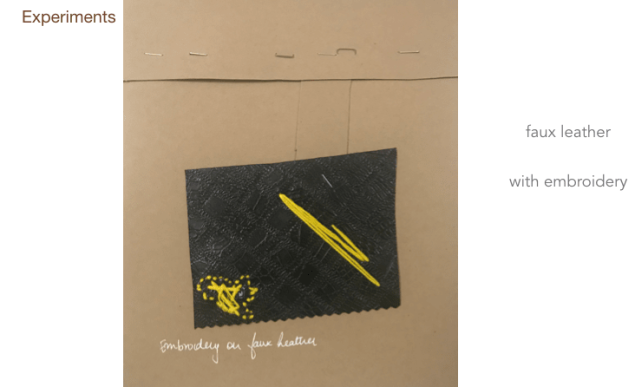





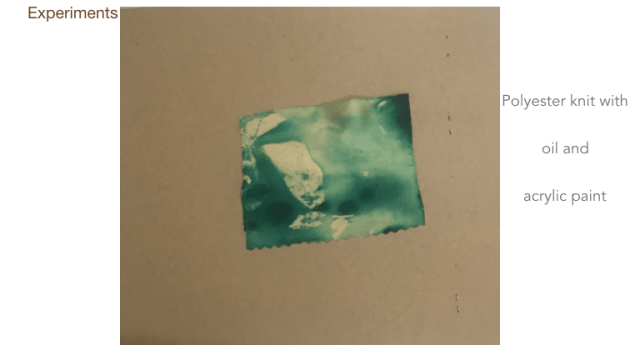







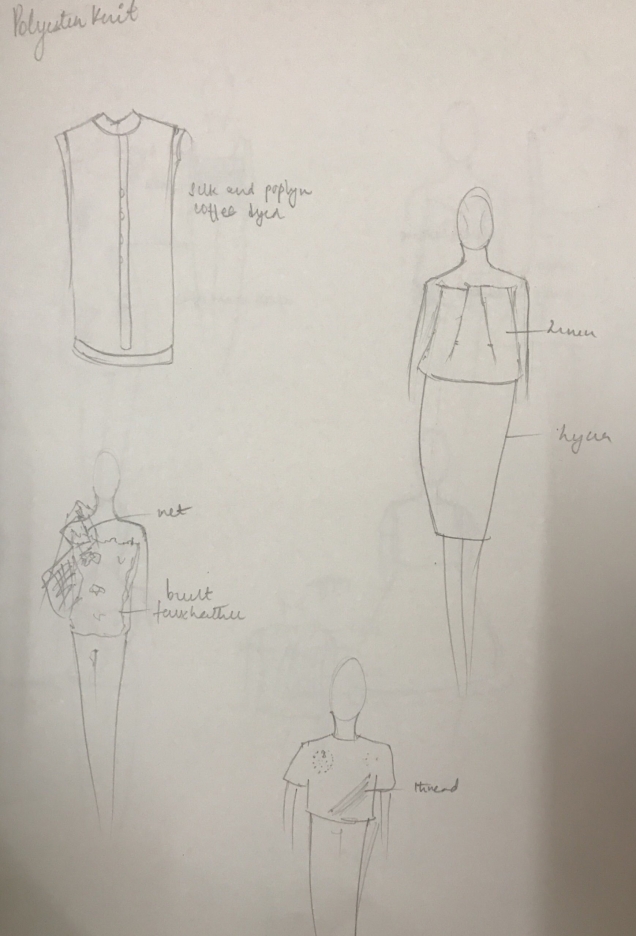



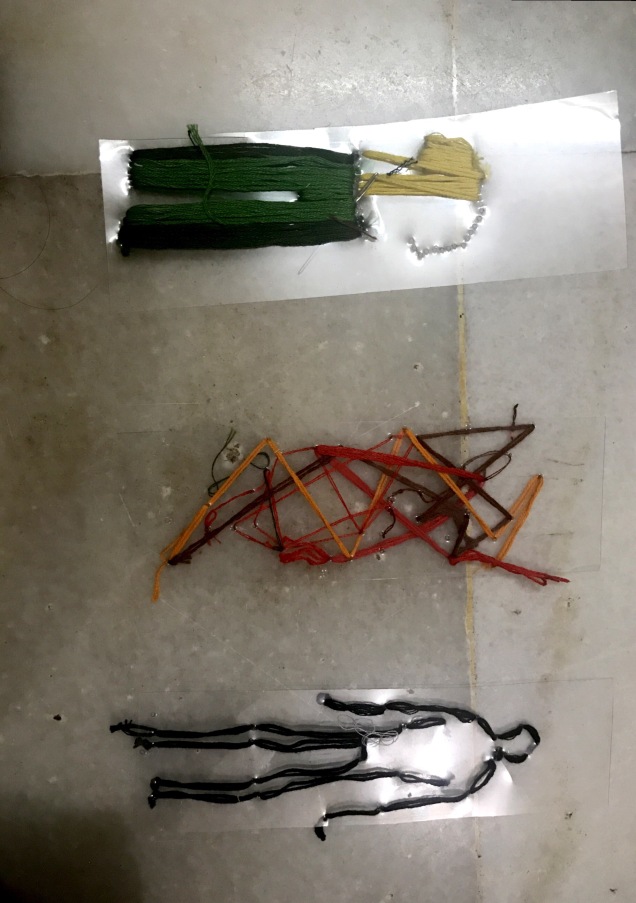




























































































































 PATTERN
PATTERN






















































































